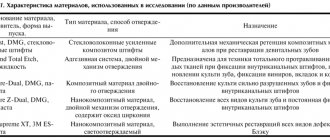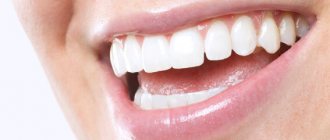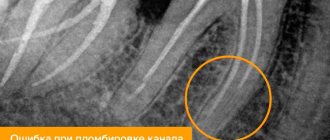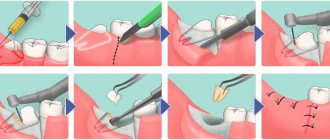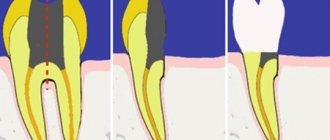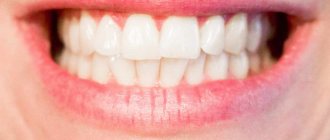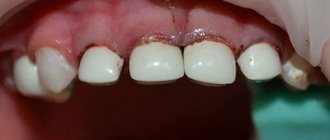Tooth extraction in dentistry is divided into simple and complex. When extracting a tooth with one root, such manipulation is considered simple. If the tooth has a complex root with several branches, then the procedure for removing it will be complex and is carried out using special tools and techniques.
In what cases is dental surgery difficult?
Complex manipulations regarding tooth extraction include the following situations:
- with disconnected roots that are excessively curved inward or directed in different directions;
- when the problem tooth is located in the affected bone;
- in the complete absence of a crown, when there is nothing to grab onto with forceps;
- if a filling was previously installed in the tooth, which can crack under the mechanical influence of forceps;
- when the tooth is impacted or dystopic;
- removing the "eight"
These are the main clinical features in which it is impossible to get rid of a diseased tooth using a standard simple procedure. Moreover, in each specific case the reasons for complex extraction may be individual.
Alternative strengthening options
An adequate alternative to parapulp rods can be restorative inlays (for extensive damage to the crown) or veneers (for minor damage to the front teeth). A filling, in principle, can also be considered as an option - but its service life is shorter, it will quickly sag or chip.
Only until 30.09 South Korean implant Osstem - 19,900 rubles.
Hurry up to sign up for a free consultation and lock in promotional prices.
Call now or request a call
Opening hours: 24 hours a day - seven days a week
Stump inlays are an optimal replacement for in-canal structures, because... they are stronger and more durable, and distribute the chewing load much better.
Read on the topic: what are dental inlays and who are they suitable for? A complete list of designs and materials for their manufacture in one article.
Cases when complex surgery is necessary
It often happens that the only possible way to get rid of a defect formed by a complex tooth is to remove it.
Indications for this type of procedure are as follows:
- the formation of periodontal tumors and edema, accompanied by soreness of the mucous membranes and gums;
- numbness of the face resulting from damage to the nerve endings of a diseased tooth;
- with an increased risk of curvature of adjacent teeth;
- in the presence of diseases caused by improper positioning of the tooth.
Surgeries to remove problematic teeth are contraindicated for those who suffer from pathologies of the cardiovascular system, with poor blood clotting, patients who have undergone a hypertensive crisis, in the presence of infectious or viral processes in the body, as well as other individual contraindications.
Classification
Tooth pins used in dentistry are either active or passive. The former have special protrusions on the surface that provide more reliable adhesion to hard tissues. They are better fixed in the dental canal, so the risk of them falling out is much lower. The active pin is held very firmly in the tooth. This is because it is not simply inserted into the roots, but screwed into the hole. Such devices are suitable only if root expansion has not been carried out before. Passive analogues do not have grooves. They are suitable for the rehabilitation of injured units. Most often they are produced in the shape of a cylinder. They can also be used to close large carious cavities. Their disadvantage is that there is no reliable adhesion between the device and hard tissues, which means that under strong mechanical stress the restoration element may fall out. Depending on how the pins are inserted, they are:
- Intrachannel. Designed for fixation in the root canal. Before their installation, depulpation is carried out. The pulp is removed, the treated area is washed and expanded, deepened. Then the product is screwed into the prepared mouth or placed on dental cement. The result is a securely fixed structure and a restoration of high strength.
- Parapulpar. We are talking about micropins here. They are located exclusively in the coronal part. The doctor makes a small depression in the inner layer of enamel into which the pin element is installed. This technique is minimally invasive. It allows you to avoid removing the nerve and carry out all restoration work in the shortest possible time. Suitable if it is necessary to strengthen weakened molar walls.
Preparing for dental surgery
If a patient is faced with the removal of a complex tooth, then an experienced doctor will not perform such manipulations without prior preparation. An x-ray is required before the operation. This is necessary to clarify the location of the tooth in the bone, as well as to evaluate the tissues surrounding it.
When a patient has an inflammatory process, it is first cured by taking antibiotics.
Complications after pulling out problem teeth rarely occur, but to avoid them, the procedure should be trusted to a highly qualified doctor.
Terms of use
Not every patient can receive a pin support. To securely hold the structure, two basic conditions must be met:
- the thickness of the root wall should not exceed two millimeters;
- if necessary, you can unseal the canal by 2/3 of its length (this situation arises if the roots have already been filled).
Contraindications to implantation are:
- very thin root walls;
- advanced inflammatory process;
- untreated granuloma, cyst;
- pregnancy;
- obstruction and severe tortuosity of the root mouth, the inability to carry out its high-quality processing.
How to remove complex teeth: basic techniques
In dentistry, various methods are used to eliminate a complicated tooth, the essence of which depends on the instruments chosen for manipulation:
- removal using forceps. Compared to
in other ways, this is considered the most gentle. This technique is used in cases where the integrity of the crown is preserved. The surgeon grabs the crown with forceps and loosens it in a circular motion until the tooth root ruptures from the alveolus, after which he pulls it out; - elevator extraction. If it is located outside the dentition, it is impossible to pull it out with ordinary forceps, then this technique is used. The instrument is inserted into the periodontal fissure and rotated, as a result of which the ligaments are torn. The tooth is not pulled out of the hole, but squeezed out;
- removal with a drill. This method is used to pull out teeth with multiple roots. First, the roots are separated using a drill and then each piece is removed separately. If a resorcinol-formalin filling is installed on a tooth, then a drill is also used to pull it out.
Which method is the best? Each has certain characteristics and is selected based on the condition of the tooth, the number and depth of its roots.
Dental pins - types, manufacturing materials, installation options: review material
Article navigation
- What is a pin
- Indications
- Contraindications
- Advantages and disadvantages
- Classification
- - metal
- - anchor
- - gutta-percha
- - fiberglass
- - carbon fiber
- - ceramic
- Installation steps
- Complications and features of rehabilitation
- Alternatives
- Price
Question for a specialist
Many people face severe tooth decay due to caries, pulpitis or trauma.
And installing a filling alone is not always a good solution, since such a restoration can quickly fail. To make the tooth more durable, a special structure is installed in it - a pin, which can be closed on top with a filling or crown. Today we will tell you all about what pins are in dentistry and why they are placed, what they look like and what they are, who is suitable and who is not suitable. We will also dwell on the features of fixation and prices.
Dystropic tooth: indications for removal
A tooth with an incorrect location in the dentition relative to its neighbors is called dystrophic. It can take the place of another, spontaneously turn, change the angle of growth, which significantly interferes with neighboring teeth and leads to the formation of a malocclusion.
Indications for extraction of a dystrophic tooth are:
- swelling of the gums and pain;
- numbness of the face due to damage to nerve endings;
- pronounced curvature of adjacent teeth;
- periodontitis or chronic pulpitis;
- when, due to a problem tooth, it is impossible to perform prosthetics;
- if a dystrophic tooth is the cause of periostitis or osteomelitis.
The removal process itself is similar to the procedure for removing an impacted tooth.
Extraction for acute and chronic inflammation
Quite often, the removal of a problematic tooth is accompanied by the presence of purulent foci, gum inflammation or periodontitis. In such cases, the doctor prescribes intensive therapy with the use of antibacterial drugs, and only after the inflammatory process has been suppressed is surgery to remove the tooth performed.
There are also situations when a tooth needs to be removed urgently. Only an experienced, highly qualified doctor can perform surgery in such cases.
Selection and calculation of pin connections
The dimensions of the products used to transmit torque depend primarily on the diameter of the shaft (within d pcs.<0.3d). The shear strength of the pin is selected using the following formula:
- t av=4T/dxd2pcs.<.
Here T is the torque and is the permissible shear stress. The last parameter is looked at in special tables. The connection is checked for collapse with a thin hub using the formula:
- Q av=2T/d(Dd)d pcs.<.
Here /d(Dd)d pcs. — conditional crushing area, — permissible bearing stress for steel.
Complex tooth extraction: when is it necessary?
Clinical indications for which the dentist prescribes complex tooth extraction are as follows:
- the presence of an unerupted wisdom tooth in the jaw;
- if the figure eight is incorrectly positioned;
- when removing molars with two or three roots;
- with a severely damaged or twisted root;
- in case of fusion of the tooth root with the jaw bone tissue;
- in the presence of a fistula or cyst;
- with excessive fragility of the crown due to treatment with resorcinol-formalin composition.
The operation itself consists of several stages and is carried out under the influence of powerful anesthetics.
Purpose
Pin connections are widely used in mechanical engineering, medicine, instrument making and other industries. It is used in the automotive industry and in the manufacture of household appliances, wherever fixed detachable joints are made.
The use of pins simplifies the fixation of parts during repair and processing.
Conical clamps are used to secure elements of body parts during their joint processing. For example, the gear housing is first processed along the parting plane. Then they drill along the flanges, install pins and bore holes for shafts and bearings with H7 accuracy.
After any number of disassemblies, all treated surfaces are precisely aligned.
Stages of complex tooth extraction
Complex removal surgery is carried out only after x-ray diagnostics, during which the shape, length and depth of the roots are determined. If the patient has inflammation, he is prescribed treatment with antibacterial drugs.
Technique of the procedure
Wisdom tooth removal is carried out in the following order:
- the gum is separated from the neck of the tooth by making an incision in the soft tissue;
- if necessary, the interroot septum is sawed or sections of bone tissue are cut out at the location of the tooth;
- then, using forceps, the tooth is rocked and pulled out of the socket;
- Sutures are placed on the gum.
Painkillers are not required after the procedure, since the effect of the anesthetics is still present.
What is a pin
What is a dental pin for teeth and why is it placed? A pin is an artificial element that is placed in a damaged tooth and allows it to be strengthened before subsequent prosthetics or before splinting a group of teeth. A dental post1 looks like a small nail, rod, or toothpick and can be hard or flexible. It can also be threaded. What are such structures made of? Nowadays dentists have a very large selection of materials – metals and alloys, ceramics, gutta-percha and others, we will tell you in more detail below.
Interestingly, restoration with a pin lies on the border of therapeutic dentistry (conservative treatment) and orthopedic dentistry (prosthetics). That is, if installation is necessary, you can contact both a dentist and an orthopedist.
Complex on 4 OSSTEM implants with delayed loading - 140,000 rubles.
Complex implantation Osstem (South Korea) with delayed loading after 4-6 months.
Doctor's work guarantee - up to 5 years (under an agreement on the provision of medical services) Call now or order a call
Opening hours: 24 hours a day - seven days a week
The healing process of the hole after a complex removal
Basically, tissue healing occurs after 7-10 days. It should be noted that this period is quite difficult for the patient. As soon as the effect of the anesthetics stops, aching pain immediately occurs. To eliminate it, you should take pain medication.
The swelling and redness that appears will decrease every day. If there is slight itching in the socket area, this indicates intensive tissue restoration. Removal of sutures after healing is not required since they “dissolve” on their own.
During the regeneration period after removal, it is very important not to disrupt the integrity of the blood clot formed in the socket. To do this, you need to follow a few simple rules:
- during the first 2-3 hours after surgery, do not consume any drinks, much less food;
- Under no circumstances should the well be heated, cleaned or washed;
- do not rinse your mouth for 24 hours after removal;
- When eating food, you need to chew it on the opposite side in relation to the hole.
If you follow these recommendations, the tissue will soon recover without complications.
Repair
In addition to crushing or shearing, in connections of this type, defects such as wear of the hole and the appearance of cracks in the parts themselves can also occur. It is not allowed to further operate the units if any of the four problems occur. Repair of the unit must be carried out. In any case, a unit with a defect will not work for very long.
The actual repair of pin connections is, of course, carried out in compliance with certain standards. In most cases, defective pins are discarded and replaced with new ones. However, GOST still allows, for example, to expand worn holes for another larger pin. It is also allowed to weld old holes and drill new ones in their place.

